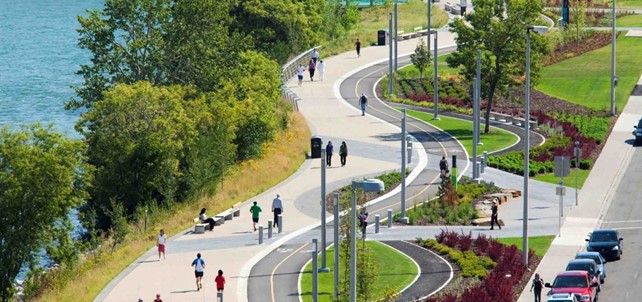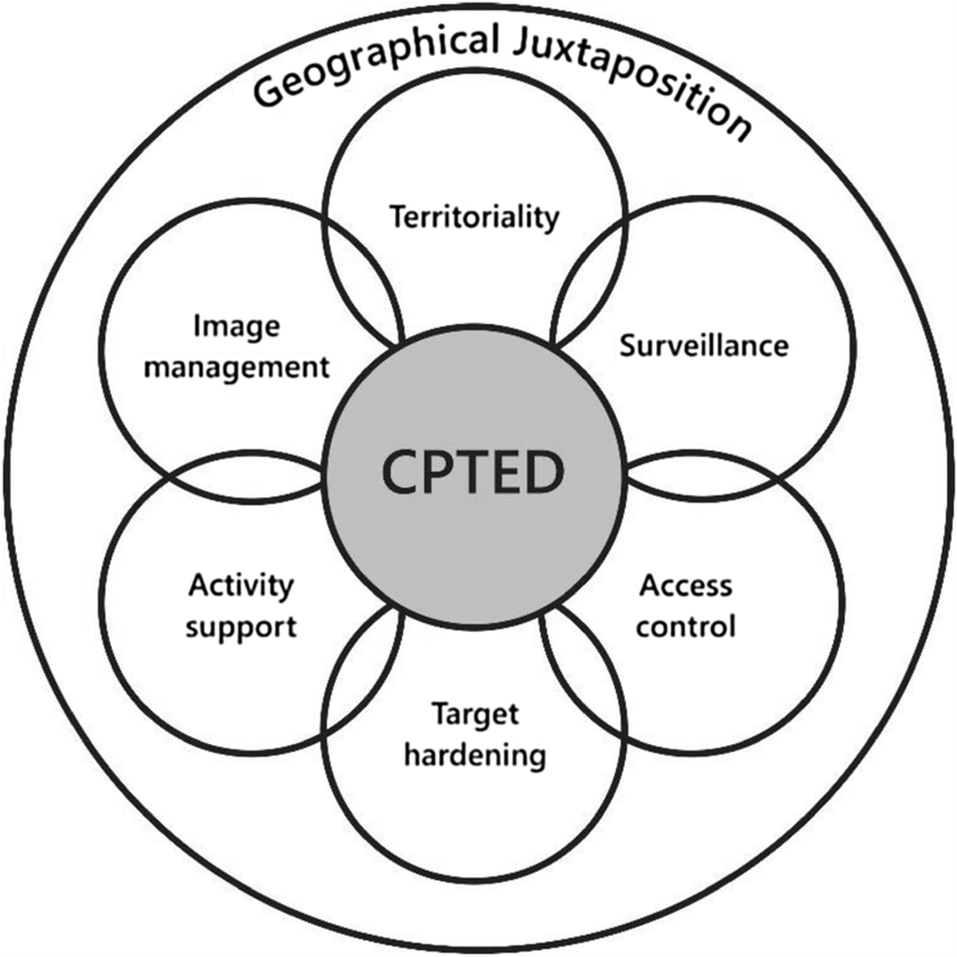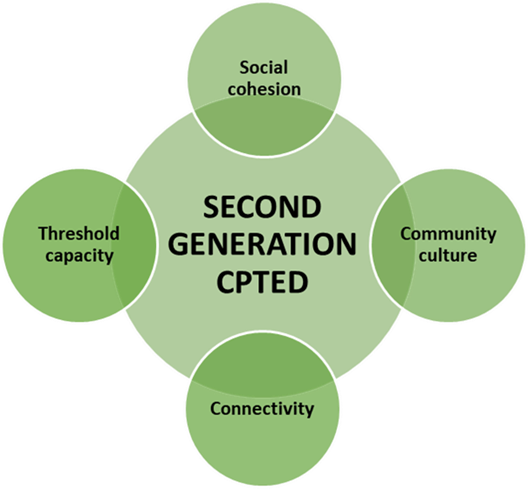
- Digitalization
Categories:
Our built environment and public spaces should be designed to improve our quality of life by meeting the physical, social and economic needs of the local community as well as providing a safe and secure place to live, work and play. This can be achieved by creating liveable neighbourhoods through the adoption of the principles that underpin Crime Prevention Through Environmental Design (CPTED).
Crimes against people and property often occur within the urban environments of cities and towns. Given that more than half of the World’s population is now urbanised, and is projected to rise to 60 percent by 2030, it’s imperative that we continue to work towards making our cities and neighbourhoods inclusive, safe, resilient and sustainable (in accordance with the United Nations Sustainable Development Goal #11).
The foundational theory of CPTED asserts that the proper design and effective use of the built environment can lead to a reduction in the fear and incidence of crime, and an improvement in the quality of life.
In response to preventing crime, particularly personal violence and property offences, we could make our cities, neighbourhoods and buildings impregnable and lock everything and everyone away behind security barriers such as walls, fences, and bollards, and monitored by a sea of security cameras and guards. While this may afford some protection, it will not contribute to the liveability of our communities and societies and ultimately degrade our quality of life. While each of these security measures have their rightful application, surely with better planning there are alternatives.
So how do we improve our safety and security in public areas, our communities and neighbourhoods?
Our built environments should, by design, aim to increase the overall quality of life by specifically making neighbourhoods healthy; socially and personally fulfilling; and, ultimately, safe. The built environment should provide us with safe, secure, and attractive places in which to live, work, and play without having to resort to regressive target hardening.
The application of CPTED principles to the built environment and public spaces, when done correctly in a bottom-up, participatory process, rather than an outcome-based top-down approach, will greatly enhance the safety and security of our community.
The design of our towns, cities and neighbourhoods have a central role to play in the way they deliver and support the interconnecting public space. CPTED can help ensure people can move easily, feel safe, navigate, and participate in desirable activities by incorporating design features that discourage unwanted and anti-social activities or behaviours.
What is CPTED?
CPTED is a process for analysing and assessing crime risks to guide the design, management and use of the built environment to reduce crime and the fear of crime and to promote public health, sustainability and quality of life.
CPTED, which draws on environmental and behavioural psychology, is the use of design and space management principles to positively influence human behaviour by creating an effective use of the built environment which can lead to a reduction in the fear and incidence of crime, as well as an improvement in quality of life.
The proper design and use of a particular environment should support desired behaviours, enhance intended functionality, reduce undesired behaviours, and reduce the opportunity for crime.
The use of CPTED is supported by the United Nations and by governments all over the world including the United States, Canada, the United Kingdom, Australia, New Zealand, and throughout Europe. It is evident in South America and in South Africa and parts of Asia. Consequently, there is now a plethora of policy guidance and standards, which operationalise CPTED as part of codes and standards.
CPTED First Generation Approach:
First generation CPTED, which has been in use since the early 1970’s, aims to ‘design out’ the opportunity for, and vulnerability to crime and ‘design in’ security risk reduction elements, using seven core principles:
- Territoriality: Establishing clear boundaries and a sense of ownership within a space, making it less appealing for offenders.
- Surveillance: Increasing visibility and opportunities for natural surveillance through design and space activation.
- Image Management: Maintaining a well-kept and cared-for appearance, signalling that the space is valued and watched.
- Access Control: Limiting access points and creating a controlled environment, making it harder for criminals to enter or exit unnoticed.
- Legitimate Activity Support: Encouraging legitimate activities and users, creating a sense of vibrancy and reducing opportunities for crime.
- Target Hardening: Making potential targets more difficult to access or damage, such as through improved locks or security systems.
- Geographical Juxtaposition: Considering the surrounding environment and its potential impact on crime patterns.

CPTED Second Generation Approach
The second-generation approach to CPTED, developed during the late 1990’s and early 2000’s builds on the first-generation approach, by expanding prevention strategies into neighbourhood conditions and social relations within the neighbourhood.
Unlike First-Generation CPTED, where the primary goal was reducing crime opportunities by modifying the physical environment, in Second-Generation CPTED, social ecology and neighbourhood health were both considered causes of crime and the source of its prevention.
First-Generation modifications change the environment within a short timeframe, whereas Second-Generation social strategies aim to build a sense of community and social cohesion over a longer period.
There are four key concepts to second-generation CPTED, which are social cohesion, community connectivity, community culture, and threshold capacity.
- Social cohesion. Social cohesion is about nurturing an environment where there exists a mutual respect and appreciation of the similarities and differences between people and groups within a community. It is central to second-generation CPTED and focuses on recognising, supporting, and celebrating community diversity. A socially cohesive community, values diversity, shares a common vision and a sense of belonging, and works to develop positive relationships between people from different backgrounds.
- Community culture. This is present when residents come together and share a sense of place and partly explains why they display any territoriality. This is about the community setting up and participating in festivals, cultural events, youth clubs, and
- commemorating significant local community events and people. A strong sense of community can encourage the neighbourhood to adopt positive outlooks and behaviours, including self-policing.
- Connectivity. Partnerships within the community can be nurtured by community connectivity. Such connections are the foundation to coordinating activities and programs with and between government and nongovernment agencies. In theory, a more empowered, well-connected, and integrated community will have a stronger sense of place. This connectivity can help to encourage and maintain community self-policing to potentially discourage crime and deviant behaviour.
- Threshold Capacity. Neighbourhoods can be regarded as ecosystems with a finite carrying capacity for certain activities and land uses. It’s important to recognise and manage this threshold capacity to maintain the local community ecosystem by promoting
- human-scale and pedestrian-oriented land uses and activities. For example, where the size and density of development do not inadvertently promote anonymity, the threshold capacity has not been exceeded. Where neighbourhood ecosystems exceed their threshold capacity, this is referred to as the tipping point where the functionality of the neighbourhood is affected. This can result in increased levels of crime and fear of crime.

Summary
Globally, CPTED is an increasingly popular crime prevention strategy supported by governments all over Europe, North America, Australia, and New Zealand, as well as in Asia and South Africa.
Sener implement CPTED principles as part of our holistic, risk-based, and preventative approach to protective security, to help protect our clients’ people, property, and information assets from crime, terrorism, and espionage-based security risk.
Sener ensures that security is a central consideration during the planning, selecting, designing, and modifying of projects, including public spaces, sites and facilities – in particular, to ‘design out’ the opportunity for, and vulnerability to crime and terrorism and ‘design in’ security risk reduction elements.
- Security
Tags:
Chris Nunn
Chris is a security consultant at Sener, and a SCEC Endorsed Security Zone Consultant. Chris provides over 17 years’ experience in the design and specification of electronic security systems, physical security solutions, security risk management, counter-terrorism strategies, crime prevention through environmental design (CPTED), and security management consulting and advisory services. Chris has extensive project experience within Australia, South-East Asia, and the Middle East within the transportation, government and defence, critical infrastructure, commercial, telecommunications, sport and recreation, arts and culture, education, energy, and healthcare industries.









